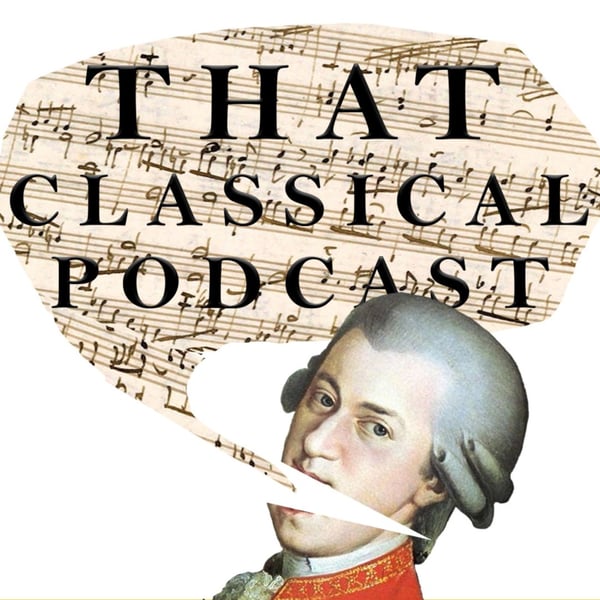"Vehement Carp and Surface Borscht": Symphonies
That Classical Podcast
That Classical Podcast
4.8 • 865 Ratings
🗓️ 8 August 2017
⏱️ 33 minutes
🧾️ Download transcript
Summary
I MEAN FOR THE LOVE OF CTHULHU WHAT EVEN IS A SYMPHONY?! Yeah fair play m8, we haven't actually explained it yet and we've been going on about it for YONKS. Well dear listeney friends, this episode we explain the living daylights out of what a symphony actually is, so you can put that in your proverbial pipe and proverbially smoke it responsibly. Enjoy!
Music Featured in this Episode:
"Symphony No. 5 in C-Sharp Minor: IV. Adagietto" - Gustav Mahler
"Symphony No. 5 in D Minor, Op 47: 1. Moderato" - Dmitri Shostakovich
"Symphony No. 1 in E-Flat, Op 32: I. Assez vif et rythmé" - George Enescu
"Symphony No. 9 in D Minor, Op. 125 - "Choral": 4. Presto - Allegro ma non Troppo - Ludvig van Beethoven
***Follow us on Facebook, Twitter (@thatclassical) and on Instagram (@thatclassicalinsta) for some top notch social media entertainment. We promise it won't just be jokes about Mozart. N.B. we can make no promises it won't just be jokes about Mozart.***
Hosted on Acast. See acast.com/privacy for more information.
Transcript
Click on a timestamp to play from that location
| 0:00.0 | Welcome to episode 20 of that classical podcast. This time, symphonies. |
| 0:07.0 | You want to be part of your symphony. |
| 0:11.0 | Hello! My name is Chris Bland. My name is Kelly Harlock and you're listening to |
| 0:16.2 | episode 20 of that classical podcast. Our 20th birthday. Happy birthday to us. If you |
| 0:20.6 | like you can send us a card. Today we're going to be talking about symphonies because we've actually |
| 0:25.6 | mentioned symphonies quite a few times on the old podcast but we've never really explained |
| 0:30.2 | what they are. So today Chris you're going to fill us in Craig David style, right? |
| 0:34.6 | Absolutely. |
| 0:36.6 | So symphonies, along with concerto are basically the dominant two forms of orchestra music |
| 0:41.8 | that we have now that gets performed in |
| 0:44.0 | orchestral concerts and it is basically just a big piece for orchestra at the heart |
| 0:50.1 | of it right okay because as opposed to a concerto which is like for a soloist plus an orchestra yeah so it's usually in four |
| 0:57.8 | movements can sometimes be in three movements fast low fast standard more often than not though is in four Fast, Fast, Fast, Standard. Classic. |
| 1:03.0 | More often than not, though, is in four movements. |
| 1:06.0 | It found its origins in Italy, Milan, more specifically. |
| 1:09.0 | Milano. |
| 1:10.0 | Milano. |
| 1:11.0 | In the early to mid-17 hundreds, it develops out of opera overtures which at that time were called |
| 1:16.9 | symphonia in Italian and the words overture and symphonia and symphony were basically all interchangeable at that point. |
| 1:25.0 | So it was an intro to the opera that didn't necessarily like use the music from the opera, but was just sort of a, |
| 1:31.0 | here's some nice music before we start doing the opera. So after it came to life in |
| 1:35.5 | Milanov it spreads to Vienna in sort of later on in the 18th century and this is because you've got |
... |
Please login to see the full transcript.
Disclaimer: The podcast and artwork embedded on this page are from That Classical Podcast, and are the property of its owner and not affiliated with or endorsed by Tapesearch.
Generated transcripts are the property of That Classical Podcast and are distributed freely under the Fair Use doctrine. Transcripts generated by Tapesearch are not guaranteed to be accurate.
Copyright © Tapesearch 2025.

